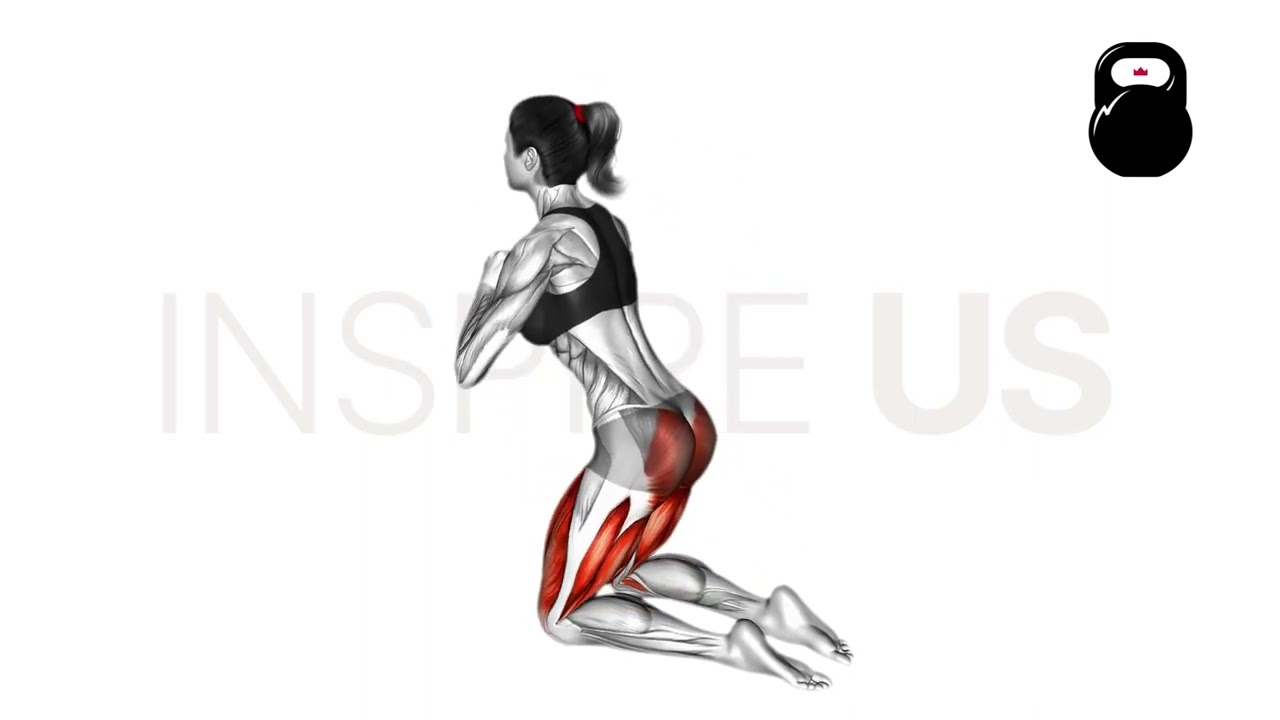Kneeling Hip Thrusts: Muscles Worked and More
Kneeling hip thrusts are primarily done to build strength and mass in the glute and hamstring muscle groups of the lower posterior chain, although they do serve some rehabilitative purpose as well.
As the name implies, the movement involves beginning in a kneeling stance and contracting the glutes to extend the hips forwards, forming a flat plane from pelvis to knee.
What are Kneeling Hip Thrusts?
Kneeling hip thrusts are a closed chain compound exercise primarily revolving around active extension at the hips while the knees remain in a constant state of flexion.
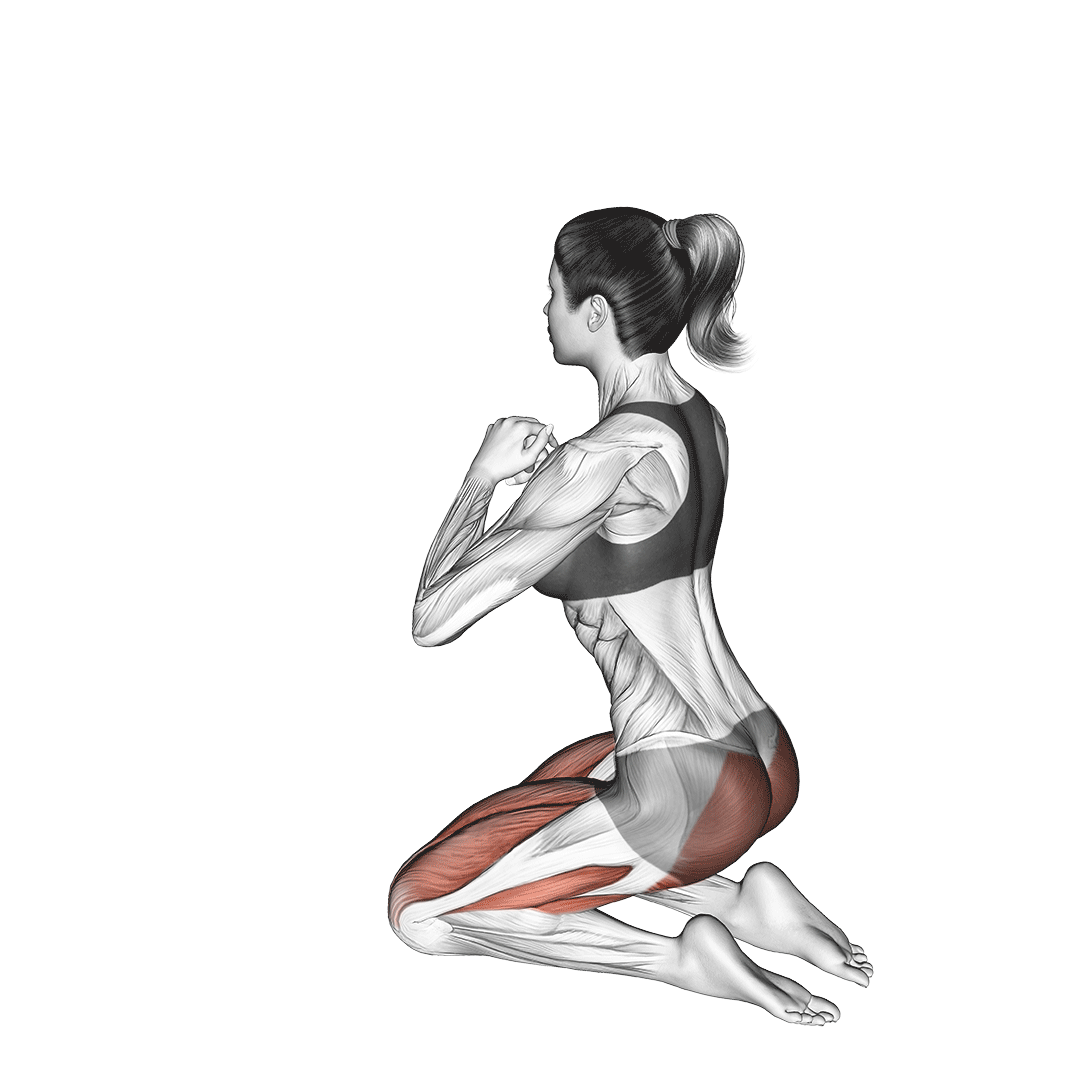
In actual resistance training programming, the kneeling hip thrust is frequently employed as a secondary compound movement for targeting the muscles of the lower posterior chain.
For less conventional training programs (or late-stage rehabilitation protocols), the kneeling hip thrust is instead performed as a primary movement for reinforcing mechanics and tissues related to pelvic movement.
Kneeling hip thrusts can also be executed with the addition of a resistance band wrapped around the hips, allowing for loading of the movement and progression beyond simple bodyweight resistance.
How to do Kneeling Hip Thrusts Correctly
In order to perform a repetition of the kneeling hip thrust, the lifter will begin by first kneeling their glutes back on their heels, torso upright, head facing forwards and spine neutral. The feet should be close together with the knees positioned around shoulder-width apart for maximum stability.
The hands may be either holding a resistance band, weight plate or otherwise simply held loosely at the front.
With their hips resting above the heels and the core lightly contracted for trunk stability, the lifter then squeezes their glutes and extends their hips forwards. This should create a straight line with the body, running from the chest to the knees as the hips rise parallel to the thighs.
Avoid producing momentum by swinging the torso, as this can take emphasis away from the glutes or lead to a loss of balance. All force should be primarily derived from the lower posterior chain muscles.
Once the glutes are fully contracted and the pelvis is aligned with the upper legs, the lifter slowly reverses the movement by pushing their hips back and sitting back atop their heels.
At this point, the repetition is considered complete.
Sets and Reps Recommendation:
Because kneeling hip thrusts are primarily a bodyweight exercise, we must use comparatively greater volume than is seen with loaded exercises. Of course, this doesn’t apply if using a band or any other form of additional resistance.
3-4 sets of 12-20 repetitions should suffice for the body weight variation.
If performing the exercise loaded, aim for 8-12 repetitions at a light to moderate level of resistance.
What Muscles are Worked by Kneeling Hip Thrusts?
In order to identify which muscles directly benefit from performing kneeling hip thrusts, we must separate them according to the role they play.
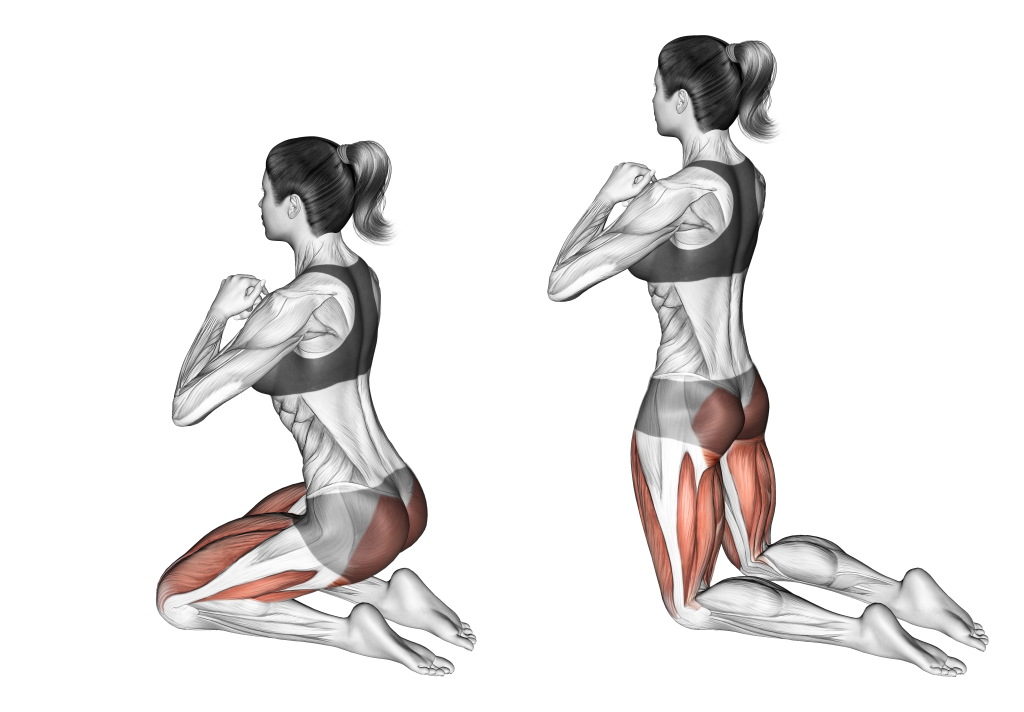
Dynamically contracted muscles that receive the majority of the stimulus are referred to as “mover” muscles, whereas those contracted statically are called “stabilizer” muscles.
Because the mover muscles exert themselves to a greater degree, they will summarily become fatigued to a greater extent than the stabilizers - but also receive the most benefit from the exercise.
Mover Muscles
Despite being a compound movement, the kneeling hip thrust actually only targets two major muscle groups.
The first and more primary of these is the gluteal muscles that make up the buttocks, where they shorten in contraction to extend the hips forwards during the initial phase of the repetition.
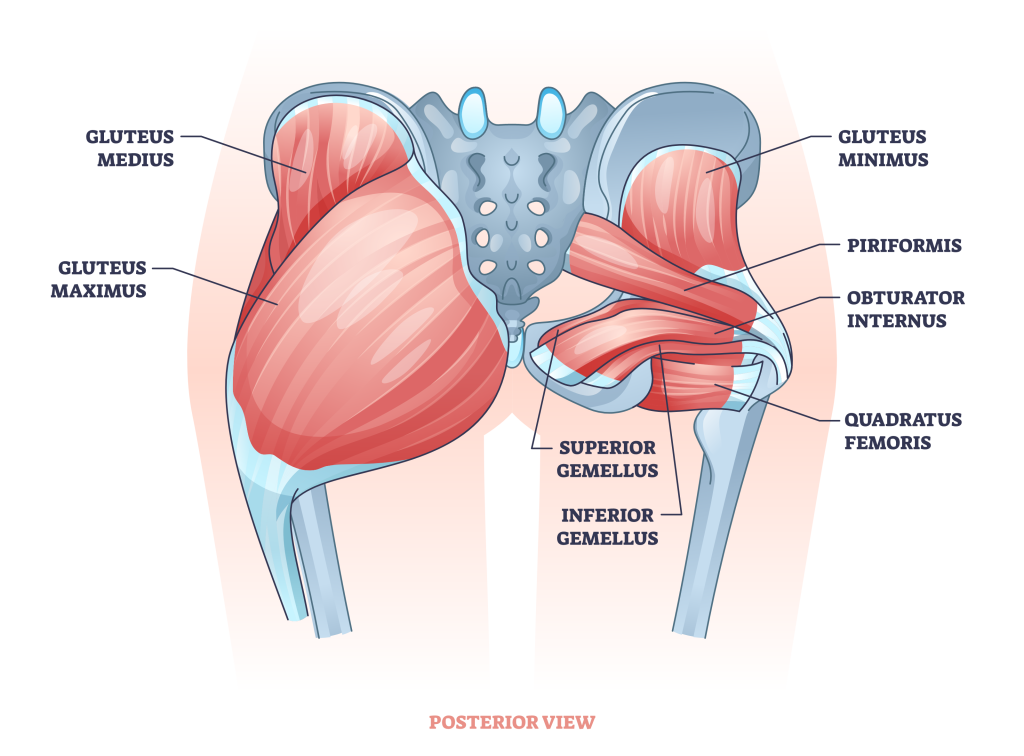
Second to the glutes are the hamstring muscles, of which also aid in extending the hips - but further play an additional role by maintaining the lifter’s kneeling stance through knee flexion.
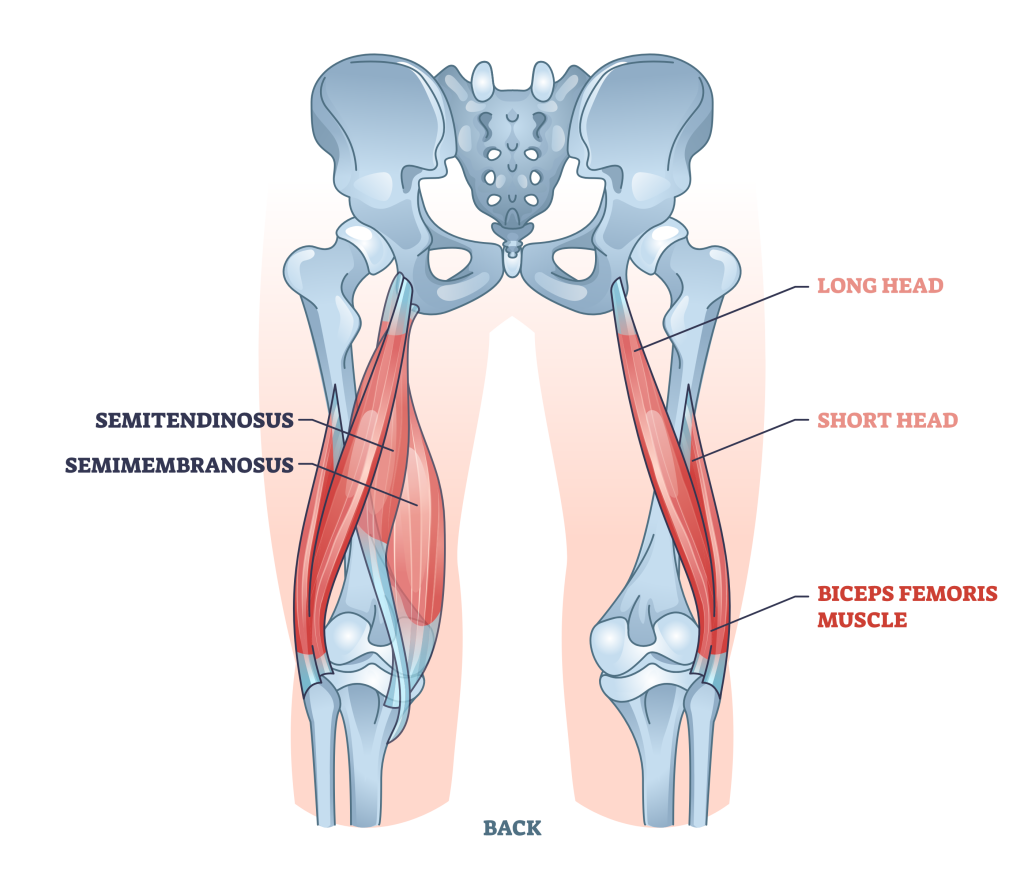
Stabilizer Muscles
Apart from the primary and secondary movers, kneeling hip thrusts will also involve muscles like the quadriceps femoris, erector spinae and abdominals in a strictly static role.
These muscles both stabilize the joints as they move and otherwise remain rigid so that proper form is maintained.
The quadriceps aid in keeping the knees in a state of flexion, whereas both the erector spinae and abdominal muscles keep the trunk upright and stable despite significant hip flexion/extension occurring.
Common Kneeling Hip Thrust Mistakes to Avoid
Though the kneeling hip thrust is quite safe and relatively easy to learn, avoid the following highly common mistakes in order to maximize muscular development.
Snapping Hips Forwards
By snapping the hips forwards or otherwise generating explosive momentum, the various soft tissues that make up the knee and hip joints are forced to absorb more force than necessary - increasing overall strain and the exercise’s risk of injury.
To ensure no injuries or either a chronic or acute nature occur, each repetition of the kneeling hip thrust should be performed in a slow and controlled tempo, ensuring the glutes “burn” throughout the entire range of motion.
Hyperextending or Curving the Back
Curving the lower or upper back can both increase strain placed on the spinal column, resulting in discomfort, an inefficient movement pattern and a greater risk of lower back injuries if particularly susceptible.
As much as possible, the entire torso should remain vertical, spine neutral and lower back flat throughout the set. This is best achieved by lightly contracting the core and ensuring the lower posterior chain muscles are the sole muscles dynamically contracted.
Poor Range of Motion
Because the gluteal muscles contract to the greatest degree during the final portions of full hip extension, it is especially important to maximize the kneeling hip thrust’s range of motion as much as possible.
Each repetition should begin and end with the hips at least over the calves, if not nearly seated atop the heels.
Likewise, the highest point of the movement should also involve the hips practically over the knees, glutes completely squeezed. This ensures full gluteal contraction and a sufficient time under tension.
Failing to complete a full range of motion can lead to poor muscular development, sticking points, instability and muscular imbalances if practiced over the long term.
Leaning the Torso Back During the Eccentric Phase
Lifters may occasionally make the mistake of leaning the upper body backwards as they flex their hips back into a fully kneeling position.
While not necessarily injurious, doing so can lead to a loss of balance or otherwise strain the core musculature more than is necessary. For a more efficient kneeling hip thrust, aim to always keep the torso over the pelvis, forming a relatively flat vertical line.
Disbalancing Through Excessive Loading
A major limiting factor to loaded kneeling hip thrusts is maintaining proper balance - especially with the use of resistance bands.
With too much resistance present, the torso will either be pulled back by the band or the excessive load will cause the upper back to round, leading to a non-vertical posture and a significantly greater risk of injuries occurring.
If you wish to truly maximize how much weight your glutes and hamstrings are moving, it may be best to select a different variation of hip thrust, or to pick a separate exercise entirely.
While we’ve listed the three best ones below, you may also benefit from barbell deadlifts, back squats or machine lying leg curls.
Variations and Alternatives of the Kneeling Hip Thrust
Whether you wish to maximize resistance or simply find the movement uncomfortable on the knees, the following are three excellent kneeling hip thrust alternative exercises.
Lying Hip Thrusts
Lying hip thrusts are simply the supine cousin of kneeling hip thrusts - often with the upper back elevated for a greater range of motion.
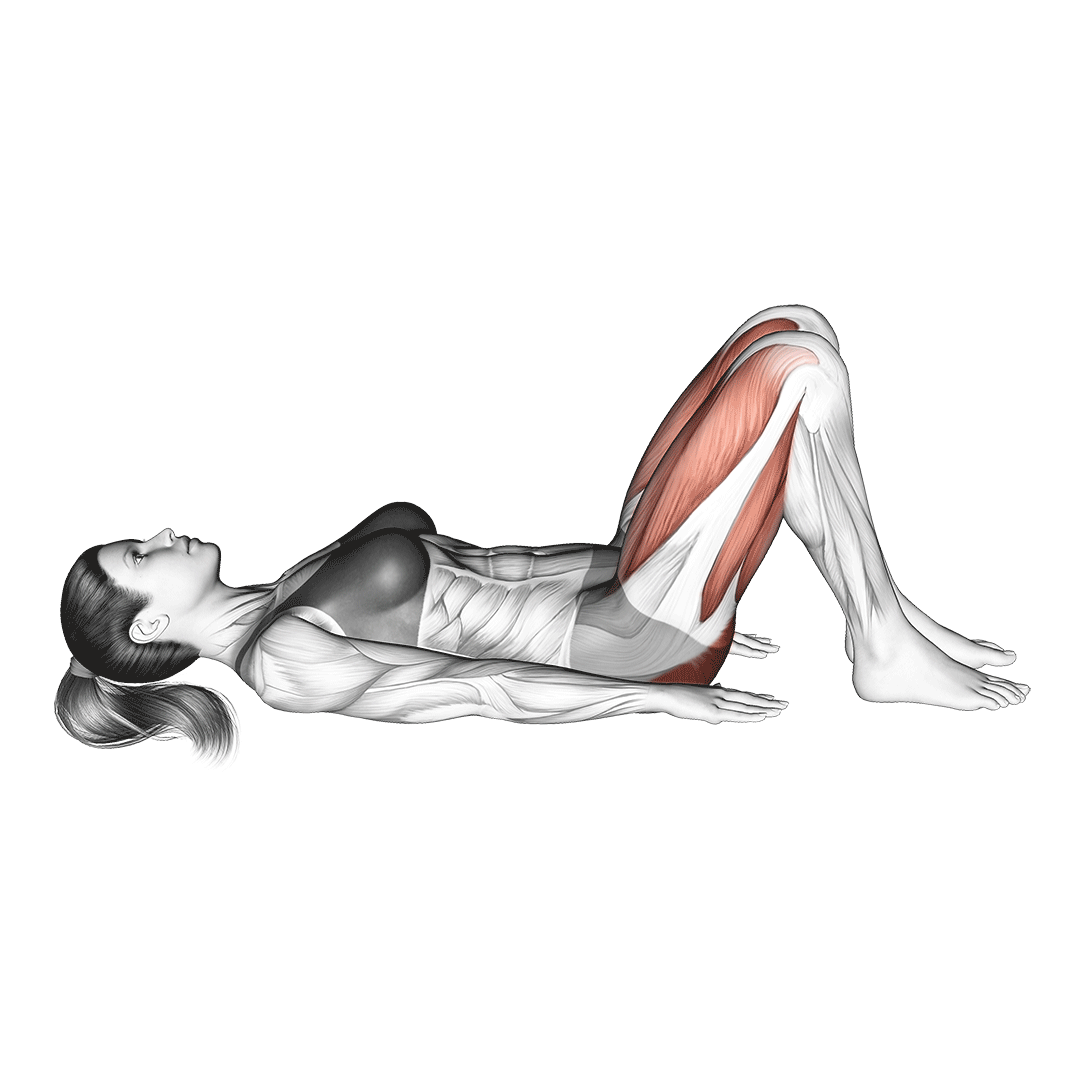
In comparison to their kneeling counterpart, the lying variant allows for an easier time loading with free weights, reduced strain on the back and less difficulty maintaining balance when fatigued.
Dumbbell Unilateral Hip Thrusters
The dumbbell unilateral hip thruster is a loaded variation of one-legged lying hip thrust involving a more explosive upward movement and far greater difficulty than conventional kneeling hip thrusts.
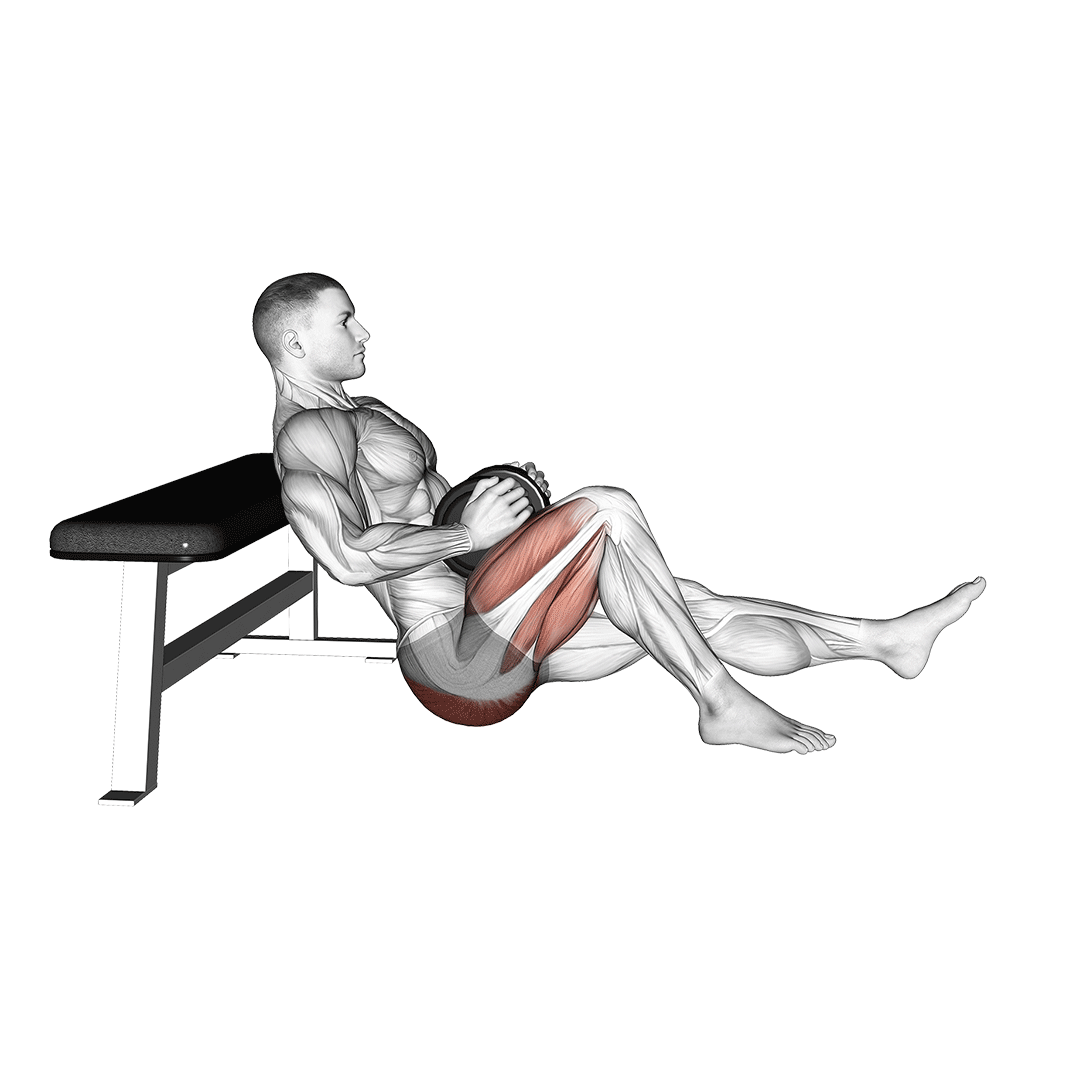
As an alternative exercise, the dumbbell unilateral hip thrust is most effective in cases where a muscular imbalance of the hamstrings is present, or otherwise if a limited amount of equipment or total weight is available.
Weighted Single Leg Deadlifts
For the greatest level of hamstring and glute loading without the use of a barbell, the single leg deadlift is likely a lifter’s best option.
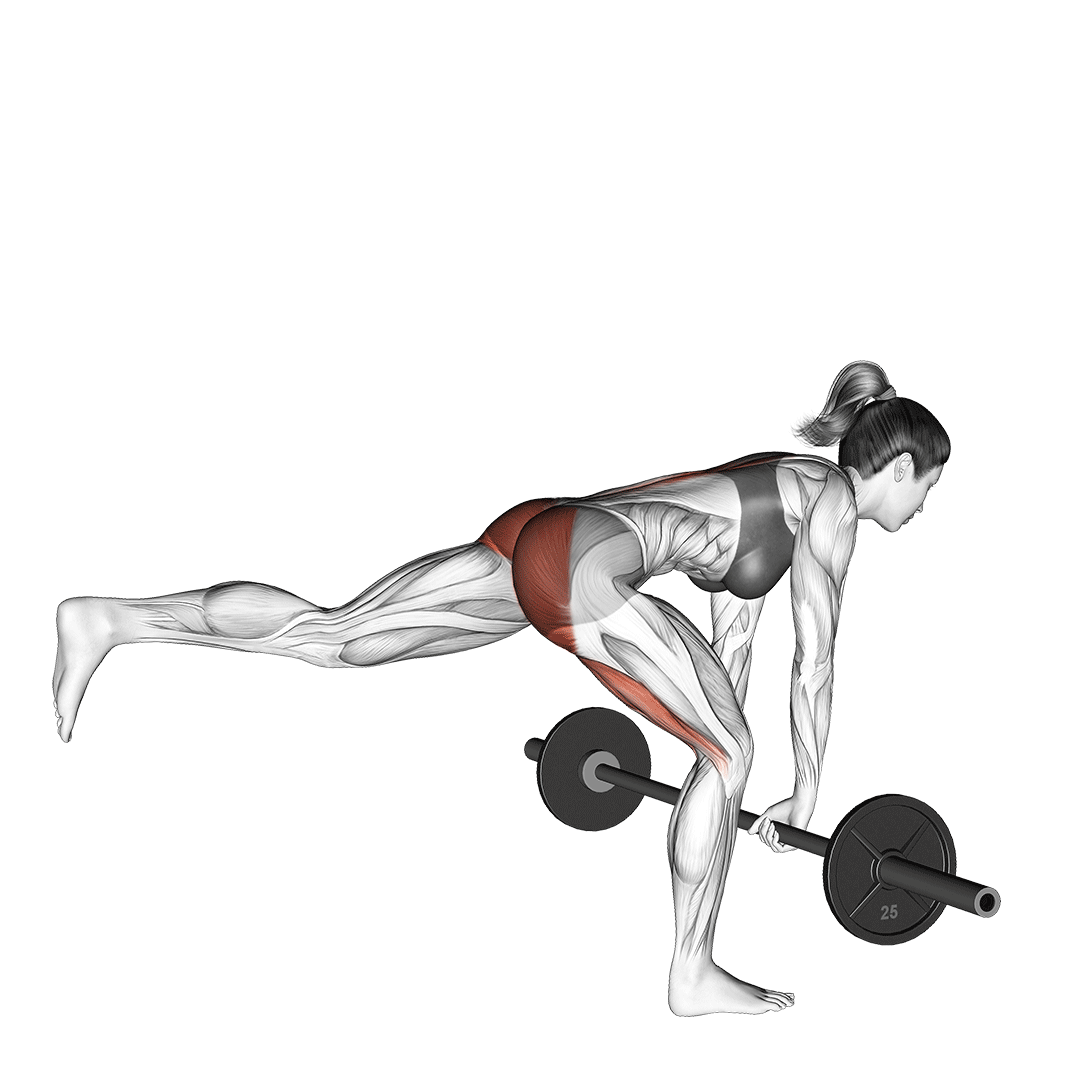
Although wider reaching and more complex than hip thrusts, the single leg deadlift allows for significantly greater strength development alongside improvements in balance, coordination and conventional deadlift technique.
Frequently Asked Questions (FAQ)
Are Kneeling Hip Thrusts Effective?
Yes - kneeling hip thrusts are excellent for developing glute and hamstring strength, improving hip extension and enhancing overall lower body muscular tone.
Combined with their simplicity and low risk of injury, anyone seeking the aforementioned benefits can make use of kneeling hip thrusts quite easily.
Are Hip Thrusts From the Floor Effective?
Lying hip thrusts are best performed with the upper back elevated.
However, in a pinch, they may be performed while lying on the floor - otherwise turning the movement into a conventional glute bridge instead.
Are Hip Thrusts Good for the Knees?
The hip thrusts do not actively involve the knee joints whatsoever.
Although hip thrusts do target the hamstrings - of which aid in knee flexion - it is a rather indirect and narrow benefit as far as knee function goes.
For reinforcement of the knee joint, aim for low-impact quadriceps exercises like banded quadriceps extensions, or even heavier lower body compound movements that actively load the knees like leg presses and back squats.
References
1. Brazil A, Needham L, Palmer JL, Bezodis IN. A comprehensive biomechanical analysis of the barbell hip thrust. PLoS One. 2021 Mar 29;16(3):e0249307. doi: 10.1371/journal.pone.0249307. PMID: 33780488; PMCID: PMC8006986.
2. Suehiro T, Mizutani M, Okamoto M, Ishida H, Kobara K, Fujita D, Osaka H, Takahashi H, Watanabe S. Influence of Hip Joint Position on Muscle Activity during Prone Hip Extension with Knee Flexion. J Phys Ther Sci. 2014 Dec;26(12):1895-8. doi: 10.1589/jpts.26.1895. Epub 2014 Dec 25. PMID: 25540492; PMCID: PMC4273052.

